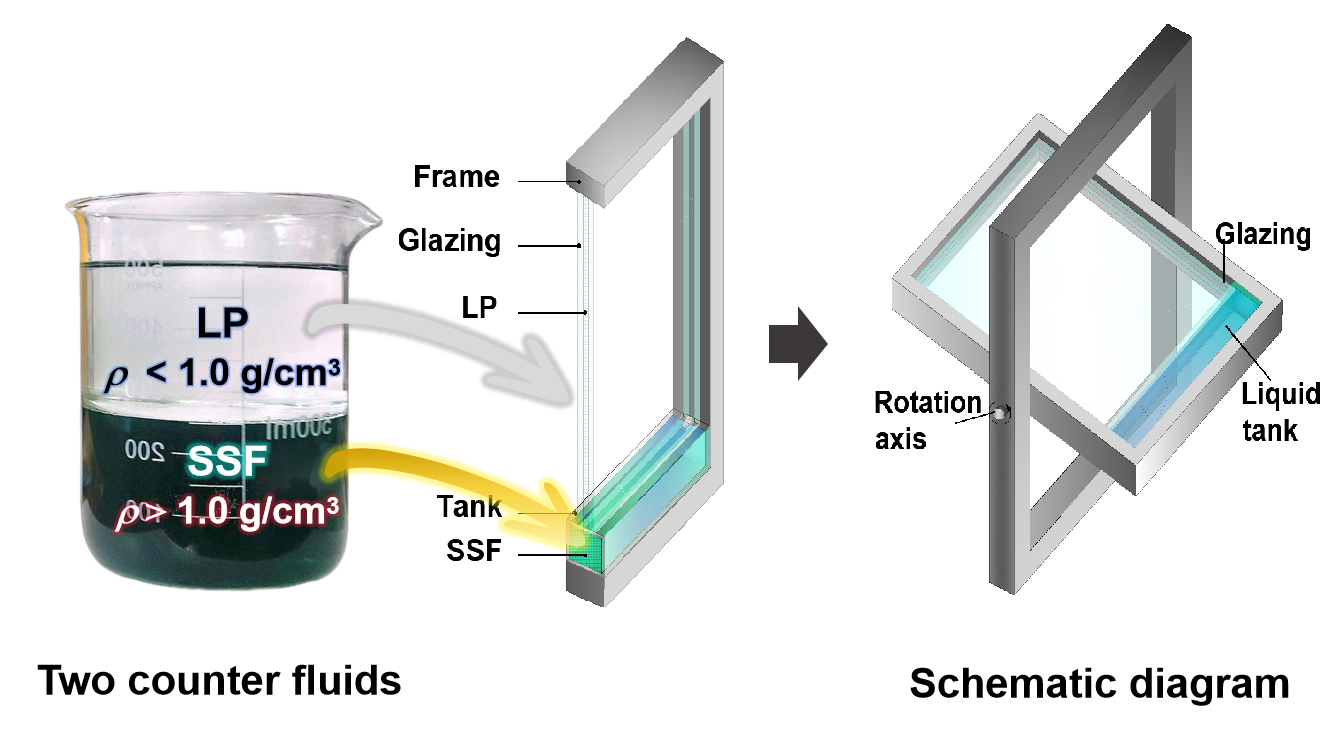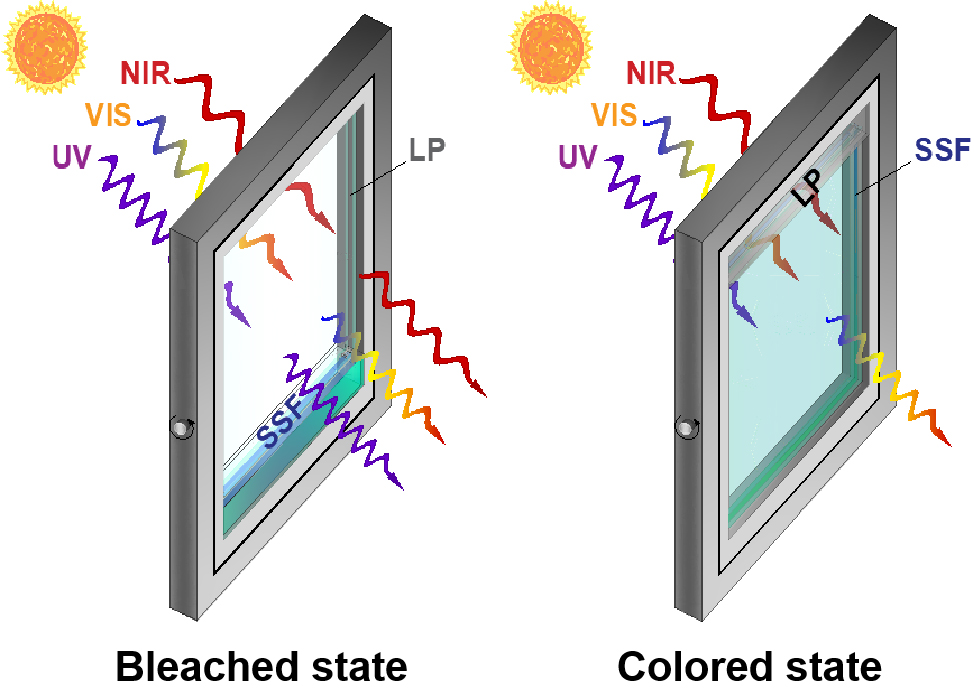
图1 - 理想窗户在冷热季节的光学特性与示意图

图2 - 翻致变色窗示意图

图3 - 翻致变色窗的操作原理
窗户是建筑节能的薄弱环节,窗户冷热损失造成建筑约40%的能耗占比。窗户的光谱调控是实现窗户节能的重要手段。太阳光谱是一多频复光谱,包含紫外线、可见光以及近红外线。建筑全年期望引入可见光以提供自然照明,而对于紫外线和近红外线的需求则因冬夏而异。
在我们小组的作品中,我们提出了一种新型可调控光谱的翻致变色窗。首先,我们提出一种翻致变色的窗框结构,并向窗体内部填充两种光学性质截然相反且互不相溶的流体。由于两种流体光学性质不同,配合窗体的特殊结构设计,可赋予窗户两种截然相反的光学特性,可适应冬夏不同需求。我们新开发的窗户可将室内表面温度降低11℃左右,同时降低约30%的建筑能耗,有望为下一代低碳绿色建筑提供技术支援。

图1 - 理想窗户在冷热季节的光学特性与示意图

图2 - 翻致变色窗示意图

图3 - 翻致变色窗的操作原理
本页内容来自得奖者参赛作品。机电工程署概不对内容的准确性、完整性或可靠性作出任何保证或承担任何责任。
Windows are often considered the weakest link in terms of building energy efficiency, accounting for approximately 40% of energy loss in buildings. To achieve carbon neutrality in buildings, it is crucial to focus on energy-saving innovations for windows. One effective approach to enhance window energy efficiency is by enabling dynamic solar spectrum regulation.
Solar radiation transmitted through windows consists of ultraviolet (UV), visible light (VIS), and near-infrared light (NIR). While VIS provides daylight, UV and NIR carry thermal energy that can heat up the indoor environment. During cold seasons, windows should be fully transparent across the entire solar spectrum to maximize solar heat gain in buildings. On the other hand, during hot seasons, windows should reject NIR and UV to reduce cooling energy consumption while maintaining high VIS transparency to optimize daylighting.
In our project, we propose a new concept of a rotatochromic window for solar regulation. This concept involves the synergistic development of two static optical materials and a reversible structure, allowing the window to switch between two distinct modes to adapt to the ideal features for both hot and cold seasons. The newly developed window can reduce the indoor surface temperature by approximately 11.2℃ and decrease building space cooling and heating energy consumption by 30% to 40%. It demonstrates excellent solar modulation ability (Tsol = 61%), high visible transmittance in both bleached (91%) and colored (56%) states, a high color rendering index (CRI > 80), and long-cyclic stability after 1000 cycles. With the advantages of facile fabrication and scalability, it is foreseen that the newly developed window holds promising prospects for next-generation low-carbon buildings.

Figure 1 - Optical Features and Schematic Diagram of the Ideal Windows for Hot and Cold Seasons

Figure 2 - Schematic Representation of the Rotatochromic Window

Figure 3 - Operating Principle of the Rotatochromic Window
The contents provided herein are from the winning entries. The Electrical and Mechanical Services Department does not endorse or assume any liability for the accuracy, completeness, or reliability of the contents presented.